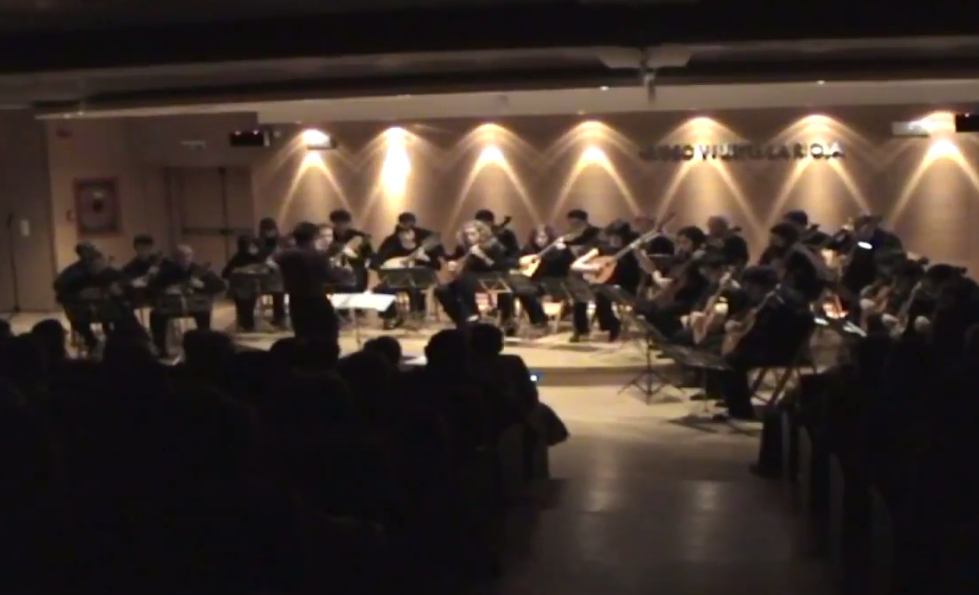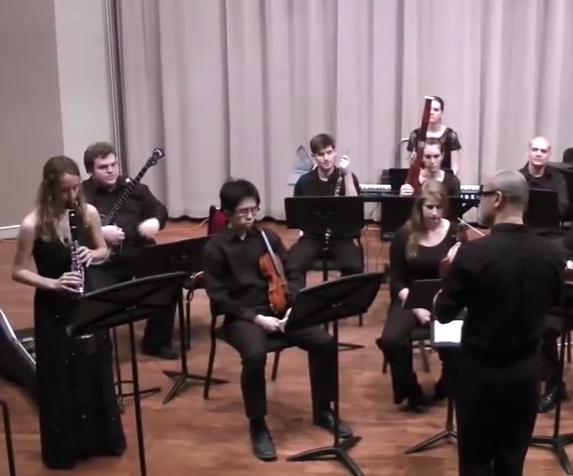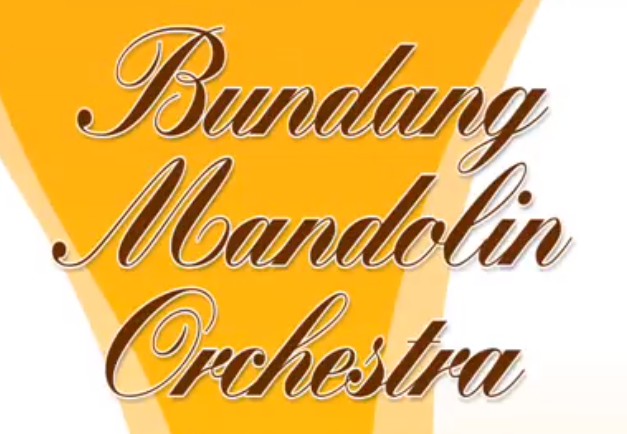The Orquesta de Plectro La Orden de la Terraza conducted by Carlos Blanco Ruiz has given a concer in december with the winner compositions of the Concurso Internacional de Composición para formaciones de Plectro “José Fernández Rojas” 2010 and of previous years.
The complete concert is available in the following playlist:
Playliste: Concierto de presentación del Fallo del Jurado del Concurso Internacional de Composición para formaciones de Plectro “José Fernández Rojas” 2010
Concierto de presentación del Fallo del Jurado del Concurso Internacional de Composición para formaciones de Plectro “José Fernández Rojas” 2010. Museo Würth Agoncillo La Rioja. 11 de diciembre de 2010. Orquesta de Plectro La Orden de la Terraza. Dirección Musical: Carlos Blanco Ruiz.
Detailed information about the program byAntonio Cerrajería Arza (Presidente FEGIP):
1 .- Javier Riba (1974 -) Acerca de la Felicidad
1st Prize Competition “Ciudad de Logroño” 2004
Soloist: Francisco Sagredo López (guitar)
This Javier Riba’s work (Córdoba, Spain), shows the emotion of the moment in which he wrote, expecting their first son, whom the work is dedicated. The piece is a concerto fantasy that reflects the great influence the maestro Leo Brouwer gave to everybody who approached him during his stay in Córdoba. Both the language and the organic development of small cells that are growing are shown in the work of Riba, in which the solo guitar part requires a technical and expressive control of high degree, accompanied by a plectrum orchestra that establishes a tutti concertante dialogue with full of strength and rhythm.
2.- Eduardo Maestre (1962-) La Senda de los Elefantes (The Laurel Street)
Award Competition “Ciudad de Logroño” 2002.
The Seville composer, a lover of La Rioja and its wines, wrote this work for La Orden de la Terraza. Playing with the nickname of the famous Laurel Street, a veritable hotbed of bars that makes it is called “The Elephant Walk” by the usual “trunks” (In Spanish the trunk means drunk) of those who try not to skip a tavern, Maestre composed a piece he calls “africanoide”. This is because it uses common composition ways used on that continent, not thematic development as in Europe, but by constant juxtaposition of polyrhythms and melodic accumulations ranging freely forming the structure of the piece.
3.- Carlos Blanco Ruiz (1970-) Música en Do
2 nd Prize Competition “Ciudad de Logroño” 2006
Cadence: Marina Cerrajería Urbina (bandurria).
It was composed in 2006 for La Orden de la Terraza. The play aims to impact right from the start, and starts from the premise that all is not as simple as it seems. The work is not in C major nor in C minor, it is not tonal nor modal. It is, by exclusion, atonal (or
not tonal). However, the motivic ideas that form the music are taken from the first bars of the Quartet K.465, called the dissonance of Mozart, also in C. The structure is simple, in three sections alternating the classical idea of fast-slow-fast. The “Deciso” initial 3 / 4 is designed almost as a Concerto Grosso. Follows a “Chacona” built on traditional techniques of counterpoint, together timbre effects of plectrum instruments (baticola, arpeggiated harmonics, tamboras…). It continues with a “Danza” which combines Spanish hemiolia with a final measure 7 / 8 that breaks the uniformity sense. Then a “Cadenza” comes for a bandurria, written for Marina Cerrajería- who plays in this video- which runs briefly stated above. And after this “Cadenza”, a final
section, as a coda that combines the three ideas giving unity to the whole work and concluding with a resounding final C in all instruments.
4.- Mirko Schrader (1964-) Divertimento Capriccioso
1 .- Ouverture / 2 .- Melancolía / 3.- Rondó.
3rd Prize Competition “Ciudad de Logroño” 2008.
German composer bonding with plectrum is huge and shows his knowledge we can find this three-movement work written entirely independent among them. The first is a fast tempo, with a contrasting middle section and runaway passages from perfect performance. The second, titled in Spanish “Melancolía” shows some daring harmonic without being risky, get a colorful, interesting clang-colour of the orchestra. It ends with a Rondó that is growing strong in their development and speed to finish with a strong game of hemiolias in the whole orchestra.
5.- Vincent Beer-Demander (1982-) Guernica
3rd Prize Competition “Ciudad de Logroño”2009. Premiere.
The French Beer-Demander, very connected to the world of plectrum, writes an expressive piece structured around a lament for a solo instrument, in the manner of a “Pavana to the memory of a people” as the author subtitled. That lament,
started by the bass in solo, recalls the tragic lived though after the bombing of the town of Guernica and frames the different sections, filled with constant polyphonic procedures. It follows, in this time for the voice of the mandola (bandurria tenor in our case) leading to a static polyphonic section of the orchestra on which the author ask the musicians to recite, as a praying, the poem “Crying for Ignacio Sanchez Mejias” by Federico García Lorca. The recitation is done “simultaneously” in Spanish, French, English, Italian and German, finishing with a new appointment of lament, this time on the bandurria, and closing with a pianissimo this great piece full of expression.
6.- César Caicedo (1974-) El poema de Bandurrio
1st Prize Competition “Ciudad de Logroño”2009. Premiere.
The title of the work is used to excuse the mestizo work of the Colombian composer. “Bandurrio” was the appellation, as a pejorative, which writer Quevedo applied to Luis de Gongora (also a poet), although he was proud of it as our instrument was a passion for him. Among his legacies documents displayed some scores for bandurria whose authorship has been attributed by the time the Cordovan poet. One is the pasacalles that serves Caicedo for spinning variations and developments of his work, cleverly mixed with other motifs, the simplest “based on the minimum expression of an instrument, which is the sound of the strings air” as indicated by the composer. Combination of these elements along with some of the timbral resources of our own instruments like tamboras, harmonics, glissandi and “redoblantes” (imitation of the snare drum with the guitar lower strings) get a piece rich in color, tones and global unity.
7.- José Manuel Expósito. Malambo
We travel to the Pampa of Argentina, where gauchos dance the malambos, an ancient form of expression in which very strong rhythms are used. Characteristic of these dances, sometimes as competitions of skill is the uniqueness of each performer in his “zapateos”. The elements of this musical form are well represented by Jose Manuel Exposito, who knew how to put them into music using all melodic, timbral and especially percussive
possibilities of our Orchestra. The work ends with a quote from Malambo from “La Suite Estancias” written by the greatest composer who has given the twentieth century in that country, Alberto Ginastera. The fact that Expósito tributes Ginastera and trusts to do so in La Orden de la Terraza, dedicating the work is a double pride and makes it a benchmark in our concert programs.
Additional informationen:
Website FEGIP: http://www.fegip.es/
youtube channel Carlos Blanco Ruiz: http://www.youtube.com/user/carlosblancoruiz
Website Orquesta de Plectro La Orden de la Terraza: http://www.laordendelaterraza.com/



